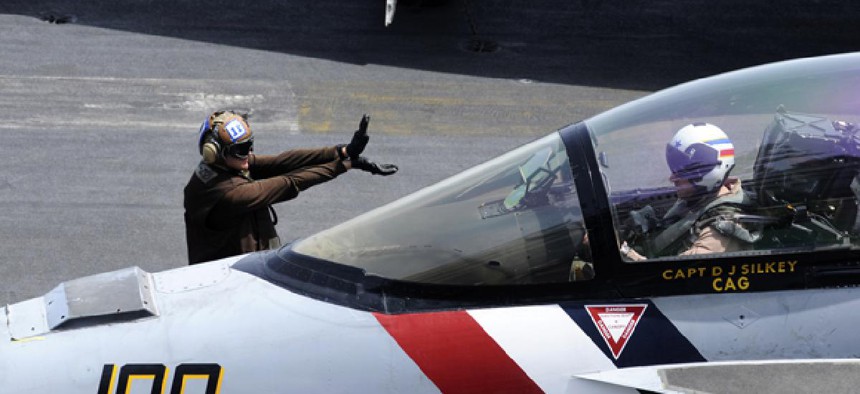Navy looks for a way to warn pilots of oxygen deprivation

U.S. Navy
Office of Naval Research wants to develop a hypoxia warning system.
The Navy wants to develop technology that warns pilots if they may become deprived of oxygen, to prevent more crashes and casualties, contract documents indicate.
The Office of Naval Research is envisioning “hypoxia monitoring, alarm, and mitigation systems” built out of mini-sensors that note changes in pilots’ bodies and the air and barometric pressure in a cockpit. The data will be processed with algorithms that predict if oxygen levels will plunge, so pilots can be warned in advance and react quickly.
The magnitude of the threat posed by hypoxia -- oxygen deprivation -- came to the forefront after an F-22 Raptor plumeted into the Alaska tundra in November 2010 when its air system malfunctioned. The pilot was killed in the crash.
Since the F-22 was put into operation in 2005, Air Force pilots have experienced 21 unexplained episodes of hypoxia-like symptoms, the New York Times highlighted in an investigative report.
The Office of Naval Research is hosting an industry day on July 31 to discuss how to develop a system to warn pilots of oxygen depletion before such fatal accidents occur. Engineers and scientists are invited to request short closed-door sessions with Navy officials. The RSVP deadline is July 24. A request for proposals is expected to be posted by fiscal 2014.
“The goal is to provide optimal protection of military personnel and equipment through intelligent monitoring and adaptive modeling . . . such that personnel can take corrective action before human/air vehicle assets are compromised or lost,” the notice reads.
NEXT STORY: Hadoop’s Challenge is Different than Linux’s





